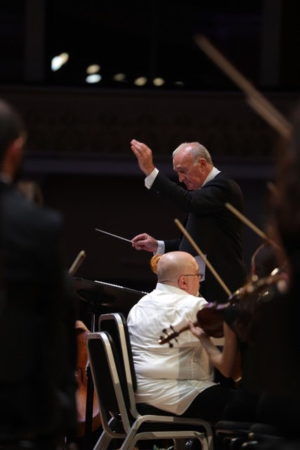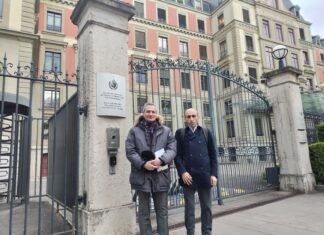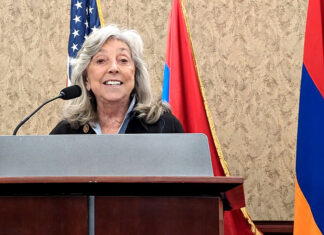YEREVAN — On Saturday May 22, 2021 Lexington Grammy Nominee composer Hayg Boyadjian’s concerto for violoncello and orchestra, after a year’s delay due to the pandemic, was premiered at the Aram Khachaturian Concert Hall with a limited audience present due to the virus precautions still prevalent in Armenia. The Armenian State Symphony Orchestra under the direction of Ruben Asatryan with solo virtuoso violoncellist Aram Talalyan premiered Boyadjian’s concerto in three movements, a challenging composition for which the two musicians rose up to the challenge.
Both Asatryan and Talalyan are familiar with Boyadjian’s music, having in the past performed other works of his. Boyadjian wrote this demanding concerto with Aram Talalyan in mind knowing well his virtuosity.
Boyadjian describes the influences that shaped his life and his musical language.

“My cello concerto is a fusion of several musical elements or ingredients. They take root on my life’s cultural backgrounds, I am first of Armenia descent; French by place of birth, Paris; Argentinian by formation, having lived my youth in Buenos Aires; and finally from age twenty two having lived in the USA. There are as one can see two components to my person, eastern cultural and western cultural influences. These are transformed into a musical language that is uniquely my own.
“In my cello concerto as it is in many of my compositions any elements of those mentioned above are used to make my compositions having a unique sound unlike any other composer. The first movement of the concerto includes a good number of passages in dance rhythm, short Armenian folk like melodies. It is a movement full of excitement where the solo cello is always in a struggle with the orchestra, but manages to hold the upper hand most of the time. “The second movement in contrast is more subdued, the cello and the orchestra become a duo in conversation and the music to some degree lyrical, again with some Armenia folk like motives. The third and last movement is an agitated race between the different sections of the orchestra and the solo cello. There are almost no motives but a rush of notes giving the impression of an ocean with continuous crashing waves nonstop. By the end of the movement the waves have calmed down and the ocean is peaceful,” Boyadjian concluded.









